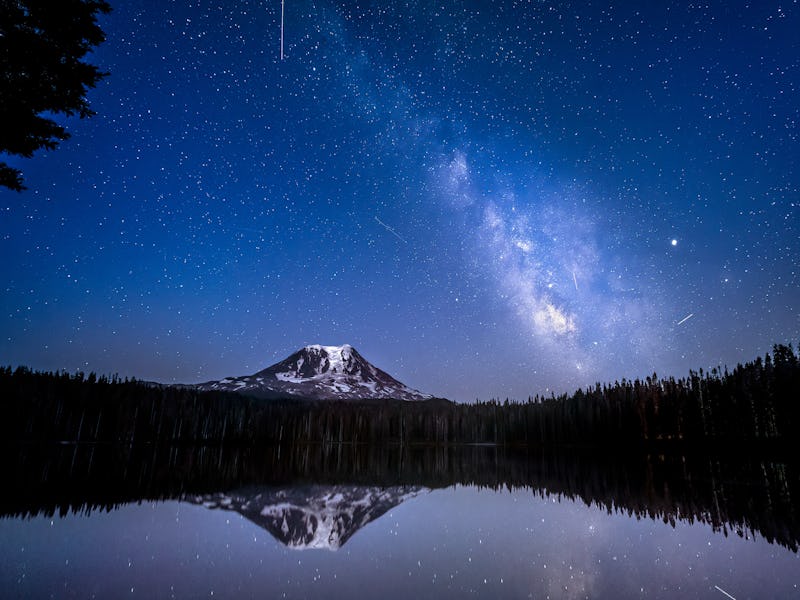Delta Aquariids: How, when, and where to watch this marvelous summer shower
The annual meteor shower peaks on July 29.

Every year, skywatchers anxiously await the Delta Aquariids meteor shower, an intense series of bright streaks racing across the sky.
The meteor shower is active from July 12 until August 23, and peaks around July 29. But its bright meteors can still be seen a couple of days before and after its peak, so be sure to keep an eye out for the flying space debris around those times, too.
The Delta Aquariids originates from the constellation of Aquarius, which is near the star Skat, the third brightest star in the constellation.
The meteor shower appears as multiple shooting stars, about 20 per hour moving at a pace of 25 miles per second, according to NASA.
The origin of the Delta Aquariids meteor shower has not been confirmed, but astronomers recently believe that it may have originated from Comet Machholz.
It is believed to originate from comet 96P/Machholz, which was discovered in 1986 by amateur astronomer Donald Machholz. The comet orbits the Sun approximately once every five years, making its trip through the inner Solar System.
Here’s how the passage of a comet or asteroid creates a brilliant shower:
- Meteor showers are pieces of rock and debris that trail off from comets and asteroids
- As a comet travels closer to the Sun, the star's powerful gravitational pull weakens it, breaking it apart as they draw nearer to the star, throwing off the dust
- The dust that falls off from comets forms into a trail around their orbits
- As Earth passes through these trails each year during its orbit around the Sun, some of the dust interacts with Earth's atmosphere and disintegrates to form the fiery streaks that we observe in the sky
How to watch Delta Aquariids?
The Delta Aquariids meteor shower is best viewed in the Southern Hemisphere and southern latitudes of the Northern Hemisphere. That includes:
- East and Central Asia
- Eastern, Central, and Western Europe
- parts of North America like Oregon and northern California, Wyoming, Colorado, Iowa, Ohio, Virginia, and North Carolina
If you look somewhere between the horizon and the zenith, and 45 degrees away from the constellation of Aquarius, you will be able to see its signature bright streaks.
It’s best to watch from a dimly lit area to get a better view of the sky and to block out any light coming from screens of electronic devices, or flashlights and allow your eyes to get accustomed to the darkness for around 30 minutes before you look up.
If you live in a crowded city, then your best chances of seeing the meteor shower are from on top of a roof or in a large park.
When to watch Delta Aquariids?
The Delta Aquariids meteor shower is best viewed in late July, although this year, its peak coincides with a bright waning gibbous moon. This means the Moon’s bright light around this time will make it harder to spot the meteor shower in the night skies.
But by early August, a dim waning crescent Moon will take over, allowing for the meteor shower to shine brighter in our view — even if it’s a bit past peak.
The best viewing times of the Delta Aquariid meteor shower is around 2 a.m. of any time zone, and lasts for several hours, according to EarthSky.
This article was originally published on